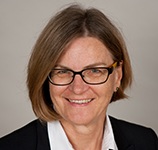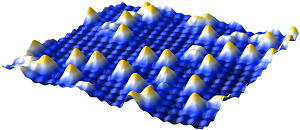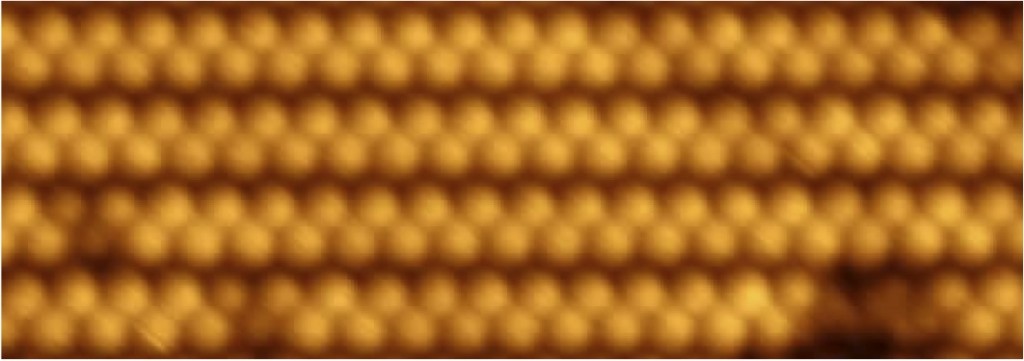Metal oxides display a wide range of properties. Accordingly, they become useful in numerous applications, such as gas sensing, catalysis, protection against corrosion, pigmentation, energy conversion, to name a few. An important detail: in order to comprehend and use these materials, the study of their surface is crucial.

Metal oxides surfaces will be the theme of a plenary talk of the XIV SBPMat Meeting. The speech will be given by Ulrike Diebold, a scientist among the leading experts on the subject in the world. Diebold is engaged in surface science since the time of her doctoral degree, defended in 1990 at the Vienna University of Technology (TU Wien), in Austria. A few years later, during her postdoctoral studies in a surface group at Rutgers University, in New Jersey (USA), she started her researches on titanium dioxide. In 1993, she became a Professor of Tulane University, in the city of New Orleans (USA) and she founded and coordinated a group on surface science. When the group labs were hit by hurricane Katrina in 2005, Diebold was welcomed by several institutions and settled, jointly with some members of the Tulane group, in Rutgers. Finally, she went back to the place where her scientific career had started, TU Wien, as a Professor and coordinator of the surface physics group. With her research groups, Diebold continues to advance in her basic and applied science studies on metal oxides, based, among other techniques, on scanning tunneling microscopy (STM), through which the scientist can investigate these materials at atomic scale.
Ulrike Diebold is the author of more than 180 peer-reviewed articles, which have over 12,000 citations. Her h-index, according to Web of Science, is 52. The scientist has already delivered more than 250 invited talks. Throughout her career, she has received numerous awards and distinctions from several entities such as the Alexander von Humboldt Foundation, American Chemical Society, Austrian Academy of Sciences, Austrian Ministry for Science, Catalysis Society of South Africa, Czech Republic Academy of Sciences, European Academy of Sciences, German National Academy of Sciences Leopoldina, National Science Foundation, among others. She is an associate editor for the Materials Physics Division of the journal Physical Review Letters.
What follows is a mini-interview with this plenary speaker of the XIV SBPMat Meeting

SBPMat newsletter: – In your opinion, what are your most significant contributions in the field of metal oxides surfaces? Please explain them, very briefly, and share references from the resulting articles or books, or comment if these studies have produced patents or products.
Ulrike Diebold: – The field started with the book “The Surface Science of Metal Oxides” by Vic Henrich and P.A. Cox, which was published in 1993 (Cambridge University Press). The book has motivated many people to develop an interest in metal oxide surfaces, and research has progressed tremendously since that time. Some is still valid to this day, e.g., the importance of defects for understanding the properties of oxide surfaces, and how critical it is to master surface preparation. Meaningful investigations can only be conducted on ‘well-characterized’ systems with a known and controlled surface structure. About ten years later, in 2003, I wrote a review that focused only on titanium dioxide, which is a widely-used material both in applications and in fundamental research (Surface Science Reports 48 (2003) 53). This review has received quite a bit of attention. Another decade later a whole issue of Chemical Reviews (vol. 113, 2013) was focused on metal oxide surfaces, which pretty much summarizes the state-of-the art in metal oxide surface research.
SBPMat newsletter: – Comment on the possibilities offered by tunneling microscopy to the study of surfaces, especially metal oxides surfaces.
Ulrike Diebold: – Scanning Tunneling Microscopy, which was invented by Heinrich Rohrer and Gerd Binnig in the early 1980s, has revolutionized our understanding of the nanoworld. One can use this technique for imaging the geometric and electronic structure of a surface at the local scale, atom-by-atom. This is particularly important for oxides, where it is often the irregularities in the lattice that are the most interesting entities, i.e., defects such as missing atoms, interstitials, or impurities. Scanning Tunneling Microscopy is the ideal tool to investigate such defects at the atomic level and to literally ‘watch’ defect-mediated chemical reactions.

SBPMat newsletter: – If you wish, leave a message or an invitation to your plenary talk to the readers who will attend the XIV SBPMat Meeting.
Ulrike Diebold: – I think it is simply exciting to observe phenomena such as defects disappearing from a surface and coming back, or single molecules dissociating or diffusing across a surface. If you want to see beautiful pictures and movies of processes that could potentially be relevant to your own research, please come to my talk.
More
